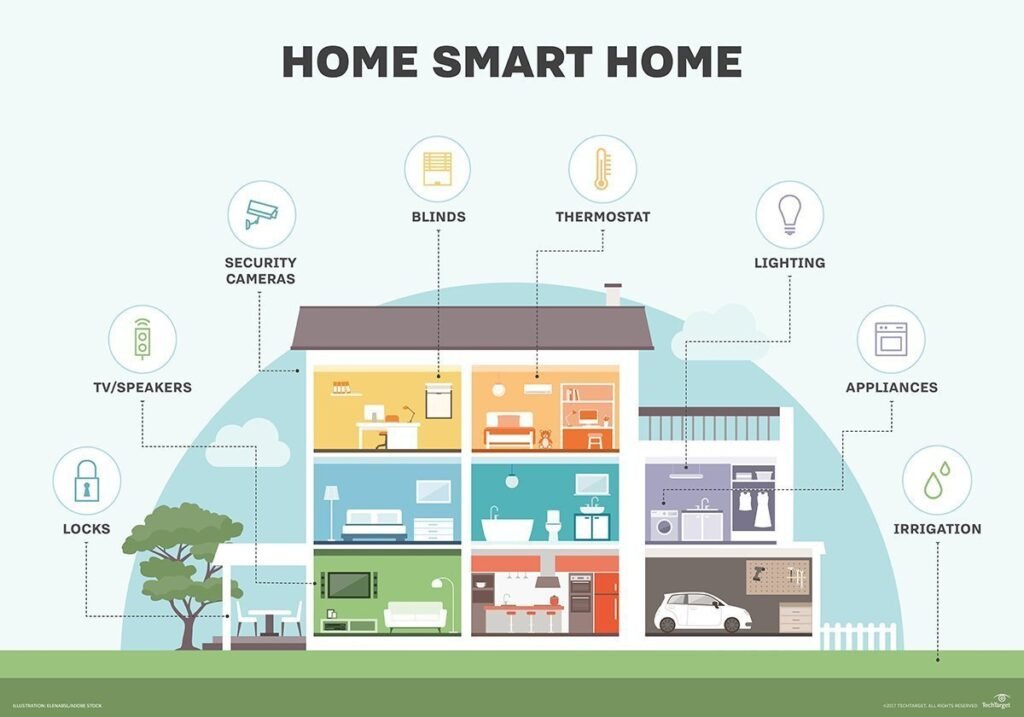The smart home revolution is evolving fast, and 2025 is shaping up to be a breakthrough year for connected living. From AI-driven appliances to energy-efficient systems, the way we interact with our homes is being transformed. At ZackGuide.com, we help tech enthusiasts and everyday users stay ahead by reviewing the latest gadgets and innovations. In this post, we’ll dive into the future of smart home technology in 2025—highlighting the top trends, devices, and what this means for your lifestyle.
What Is Smart Home Technology?
Smart home technology refers to a network of devices connected through the internet (IoT – Internet of Things) that allow you to monitor and control appliances, lighting, heating, security, and more—all from your smartphone or voice assistant.

1. AI-Powered Automation Takes the Lead
Artificial Intelligence (AI) is playing a bigger role in smart homes than ever before. In 2025, devices won’t just respond to commands—they’ll anticipate them. AI will learn user habits and automatically adjust lighting, temperature, or even play your favorite music based on your routine.
Example: Imagine your home lowering the thermostat before you even walk in because it knows you’re coming from work. Brands like Google Nest and Amazon Alexa are already advancing this kind of predictive automation.Smart Home Technology
2. Energy-Efficient Smart Devices
With climate change being a global concern, smart technology is aligning with sustainability goals. In 2025, energy-efficient smart devices will help homeowners reduce their carbon footprint and electricity bills.
Smart thermostats, LED smart bulbs, and solar-integrated systems are becoming more common. These devices track energy usage and offer suggestions to optimize consumption. Expect to see more integration with green energy providers and smart meters.
3. Advanced Home Security Systems
Security is one of the top reasons people invest in smart home tech. In 2025, smart security cameras will offer higher resolution, facial recognition, and real-time alerts via mobile apps.
Notable trends:
- 360-degree indoor/outdoor cameras (like the Wyze Cam Pan v3)
- Smart door locks with biometric access
- Drone patrols for large properties
- Integrated smoke, gas, and leak detectors
Your home won’t just be smart—it will be safer.
4. Voice Control and Multilingual Assistants
Voice assistants are evolving in 2025 with better natural language processing. Devices like Amazon Echo, Google Home, and Apple HomePod will support multilingual users and understand complex commands.
You’ll be able to say:
“Turn off the bedroom lights, lock the front door, and play sleep sounds in 15 minutes.”
The future is hands-free and personalized, making home management easier for everyone, including the elderly and disabled.
5. Smart Kitchens and Connected Appliances
Your kitchen is about to become smarter than ever. In 2025, connected refrigerators, smart ovens, and AI-powered cooking assistants will help you manage meals, reduce food waste, and even order groceries automatically.
For example, Samsung’s Family Hub fridge can track expiry dates, suggest recipes based on what’s inside, and sync with your online shopping accounts. Meanwhile, robotic cooking arms and Wi-Fi-enabled coffee makers are making waves in smart kitchen design.
6. Integration With Wearables
Smart homes in 2025 will be more connected to wearable tech like smartwatches and fitness trackers. Your smart home system will read your heart rate, sleep cycle, and mood—and adjust surroundings accordingly.
- Feeling stressed? Your lights may dim and soothing music will play.
- Woke up late? Your alarm system will sync with the coffee maker to speed up your morning.
This level of integration brings true personalization to your living space.
7. Centralized Control Hubs
In the past, managing multiple smart devices required juggling several apps. In 2025, centralized hubs like Apple HomeKit, Google Home, and Samsung SmartThings are becoming more powerful and user-friendly.
With Matter protocol—a new industry standard—more devices are becoming cross-compatible, meaning less hassle and more seamless control over your home tech.
8. Affordable Smart Home Tech for Everyone
Smart technology is no longer just for luxury homes. Thanks to increased competition and affordable options from brands like Wyze, TP-Link, and Eufy, the average homeowner can now enjoy a smart home setup on a budget.
Starter kits under $100 can include:
- Smart bulbs
- A smart plug
- Basic security camera
- Voice assistant speaker
This opens the door for mass adoption, especially in developing regions.
Conclusion: Get Ready for the Future of Smart Living
2025 is the year smart homes move from convenience to necessity. With AI automation, energy savings, and tighter security, investing in smart home tech isn’t just a trend—it’s a lifestyle upgrade.
At ZackGuide.com, we’re dedicated to reviewing the latest smart home gadgets and giving honest, insightful advice. Whether you’re just getting started or upgrading your existing system, check out our reviews to make smart choices that suit your needs and budget.
Stay connected. Stay smart/. Visit ZackGuide.com for the best in tech reviews, comparisons, and buying guides.

